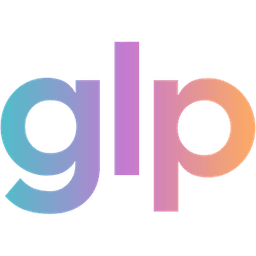GLP-1s vs Peptides: What’s the Difference?
Author
glp winnerDate Published
- Twitter
- Facebook
- LinkedIn
- Instagram
- Copy Link
.jpg&w=3840&q=100)
If you’ve spent even a few minutes online searching for weight loss solutions, you’ve probably come across two buzzy words: GLP-1s and peptides. They’re often mentioned in the same sentence, sometimes even pitched like they’re interchangeable. But in reality, these terms describe very different things—and the differences matter.
GLP-1 medications are FDA-approved drugs. Peptides are a much broader category of molecules, some with early research behind them, many with none at all. And somewhere in the middle sits a confusing space where “compounded” or “peptide” versions of GLP-1s get sold online. To really understand what’s safe and what’s hype, we have to tease apart those layers.
What GLP-1s Actually Are
GLP-1 stands for glucagon-like peptide-1, a natural hormone your body makes. It helps regulate blood sugar, slows down digestion, and tells your brain when you’re full.
Drugs like semaglutide (Ozempic®, Wegovy®), tirzepatide (Mounjaro®, Zepbound®), and liraglutide (Saxenda®) are synthetic versions of this hormone. These are FDA-approved prescription medications. That means they’ve been studied in large clinical trials and manufactured under strict standards.
Those studies are what set them apart. People taking GLP-1 medications lost about 10–20% of their body weight over 12–18 months on average (NEJM STEP Trial; PubMed). They’ve also been shown to help with type 2 diabetes (NCBI) and even lower cardiovascular risks in certain cases (Bioscientifica).
Compounded GLP-1s from Telehealth Pharmacies
Some telehealth providers work with licensed compounding pharmacies to create patient-specific versions of GLP-1 medications such as semaglutide or tirzepatide. These compounded options can be appropriate in certain cases — for example, when a patient needs a different dosage form, customized strength, or when an FDA-approved version is in short supply.
Compounded GLP-1s are prepared in licensed facilities, and some are made in FDA-inspected outsourcing pharmacies (known as 503B facilities). However, these compounded products themselves are not FDA-approved, which means the FDA does not review each specific formulation for safety, effectiveness, or quality before it reaches patients.
That doesn’t make them automatically unsafe — but it does mean consistency can vary from batch to batch depending on the pharmacy’s processes. The FDA has issued general guidance for compounded injectables because issues like contamination or potency variance have occurred in the past (PubMed).
When prescribed by a qualified clinician and dispensed by a reputable, transparent pharmacy that follows USP standards and testing protocols, compounded GLP-1s can serve a legitimate role in care. Patients should always verify that their provider discloses which pharmacy is used, whether it’s licensed to ship in their state, and whether potency and sterility testing results are available.
Grey Market “GLP-1 Peptides”
Then there’s the far riskier side: the grey market, where you don’t go through a doctor at all. These are bulk powders, unbranded vials, or “research-use-only” kits sold online, often under the name “GLP-1 peptides.” They’re not made in licensed pharmacies and usually come with disclaimers like “not for human use.” In reality, people buy them, reconstitute them with sterile water, and inject them themselves.
The FDA has specifically warned against these unapproved GLP-1 products being sold online, because there’s essentially no oversight of what’s in the vial (FDA). You don’t know if it actually contains semaglutide or tirzepatide, whether the dose is correct, or if contaminants are present. You may not even be a good candidate for using GLP-1s and still be able to purchase grey market peptides. Independent analyses of illicit peptide products have found serious issues with purity and labeling (ScienceDirect). Add in the fact that users are mixing and injecting these at home, and the risk skyrockets.
Compared to pharmacy-compounded GLP-1s, which at least pass through regulated facilities, these grey market products are much more unpredictable.
Peptides Beyond GLP-1s
Stepping outside of weight loss, the word “peptide” can point to something else altogether. In the wellness and cosmetic worlds, peptides are marketed for things like skin repair, hair growth, anti-aging, or muscle recovery (Cleveland Clinic).
Some of these have modest early evidence:
- Copper peptides may help improve scalp health and hair density, though research is small and preliminary (International Journal of Trichology).
- Collagen and cosmetic peptides like Matrixyl are studied for skin hydration and elasticity, with some benefits reported in dermatology journals (Journal of Cosmetic Dermatology).
But these are not prescription drugs. They’re usually sold as supplements, creams, or injections at anti-aging clinics. Unlike FDA approved GLP-1 medications, they haven’t gone through large clinical trials.
Why It Gets So Confusing
The mess comes down to one slippery word: peptide. GLP-1 medications are peptides. Compounded GLP-1s get marketed as peptides. Grey market vials are literally labeled “peptides.” And wellness products for skin and hair? Same word, different world.
So when someone says “I’m on peptides,” it could mean an FDA-approved drug, a telehealth compounded injection, a grey market vial mixed at home, or a cosmetic cream. Each of those carries very different risks and expectations.
The Risks of Blurring the Lines
Here’s what matters most: not all peptides are created equal.
- FDA-approved GLP-1s → safe, effective, regulated.
- Compounded GLP-1s from pharmacies → sometimes used when brand-name isn’t available, but not FDA-approved.
- Grey market GLP-1 peptides → essentially unregulated, high-risk, and sometimes sold under misleading labels.
- Wellness peptides → interesting for skin or hair, but still experimental.
When these all get lumped together under one word, it makes it far too easy for someone to end up taking something unsafe while thinking it’s equivalent to a proven drug.
Bottom Line
Think of it like lanes on a highway:
- Lane 1: FDA-approved GLP-1 medications like semaglutide and tirzepatide.
- Lane 2: Compounded GLP-1s from telehealth clinics—ready-to-inject, sometimes from FDA-inspected facilities, but not FDA-approved themselves.
- Lane 3: Grey market “GLP-1 peptides”—raw powders and vials sold online, mixed at home, extremely high risk.
- Lane 4: Other peptides for hair, skin, and wellness—an entirely different category, mostly early-stage science.
Knowing which lane you’re in isn’t just semantics. It’s the difference between a proven treatment, an experimental option, or a potentially dangerous gamble.
If you enjoy posts like these, you can subscribe to receive newsletter updates.
Sources
Keep Reading

GLP-1 myths spread fast. Here’s the truth about Wegovy, Zepbound, side effects, “Ozempic face,” and more—backed by trusted sources.

Discover how Halloween candy triggers cravings, how GLP-1 meds affect appetite, and real strategies to manage sugar temptations this season.

Learn what microdosing GLP-1s really means, what’s known, what’s not, and key questions to ask your doctor before considering it.
